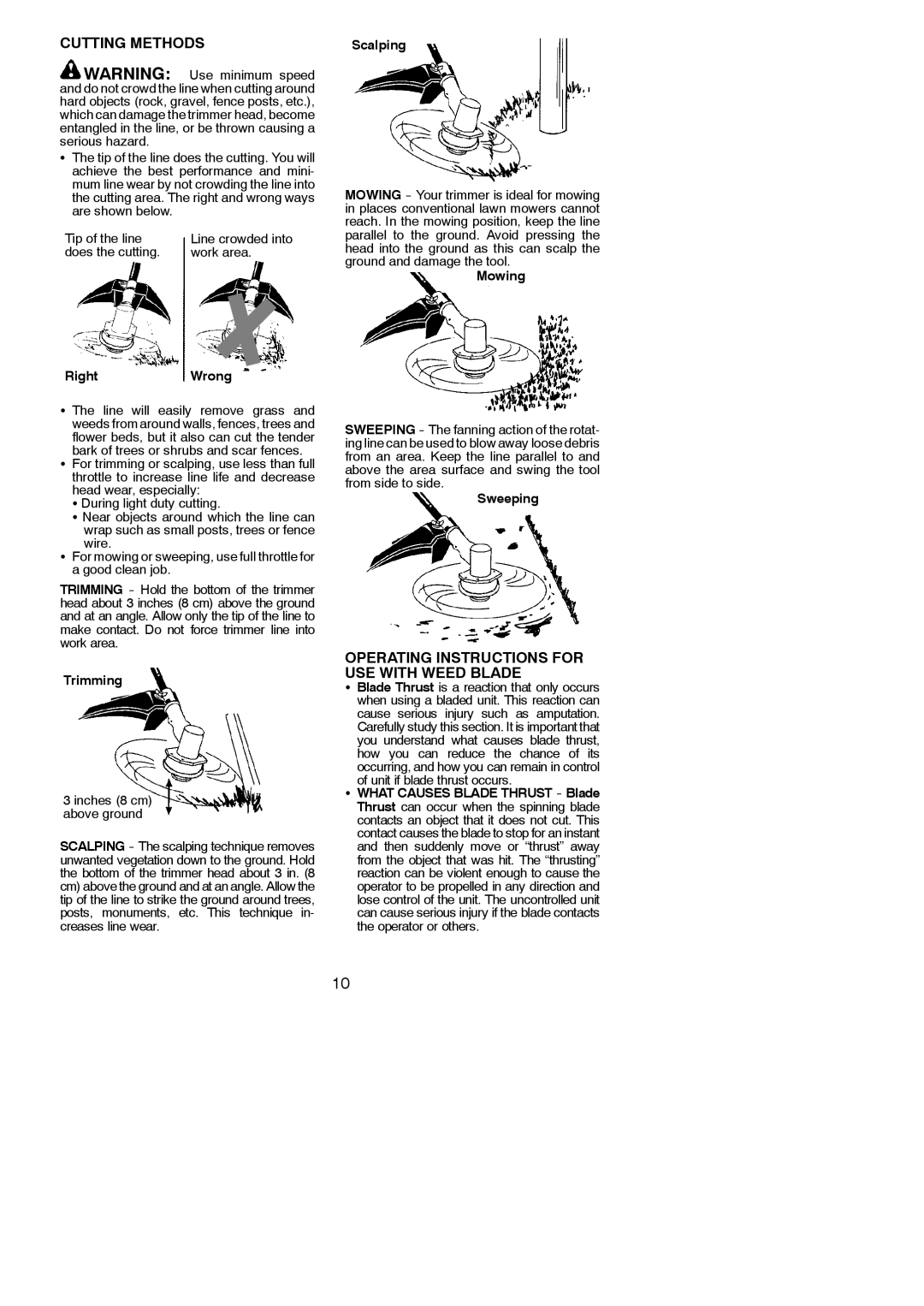
CUTTING METHODS
![]() WARNING: Use minimum speed and do not crowd the line when cutting around hard objects (rock, gravel, fence posts, etc.), which can damage the trimmer head, become entangled in the line, or be thrown causing a serious hazard.
WARNING: Use minimum speed and do not crowd the line when cutting around hard objects (rock, gravel, fence posts, etc.), which can damage the trimmer head, become entangled in the line, or be thrown causing a serious hazard.
SThe tip of the line does the cutting. You will achieve the best performance and mini- mum line wear by not crowding the line into the cutting area. The right and wrong ways are shown below.
Tip of the line | Line crowded into |
does the cutting. | work area. |
Scalping
MOWING
Mowing
RightWrong
S The line will easily remove grass and weeds from around walls, fences, trees and flower beds, but it also can cut the tender bark of trees or shrubs and scar fences.
SFor trimming or scalping, use less than full throttle to increase line life and decrease head wear, especially:
S During light duty cutting.
S Near objects around which the line can
wrap such as small posts, trees or fence wire.
SFor mowing or sweeping, use full throttle for a good clean job.
TRIMMING
Trimming
3 inches (8 cm) above ground
SCALPING
SWEEPING
Sweeping
OPERATING INSTRUCTIONS FOR USE WITH WEED BLADE
SBlade Thrust is a reaction that only occurs when using a bladed unit. This reaction can cause serious injury such as amputation. Carefully study this section. It is important that you understand what causes blade thrust, how you can reduce the chance of its occurring, and how you can remain in control
of unit if blade thrust occurs.
SWHAT CAUSES BLADE THRUST
10
